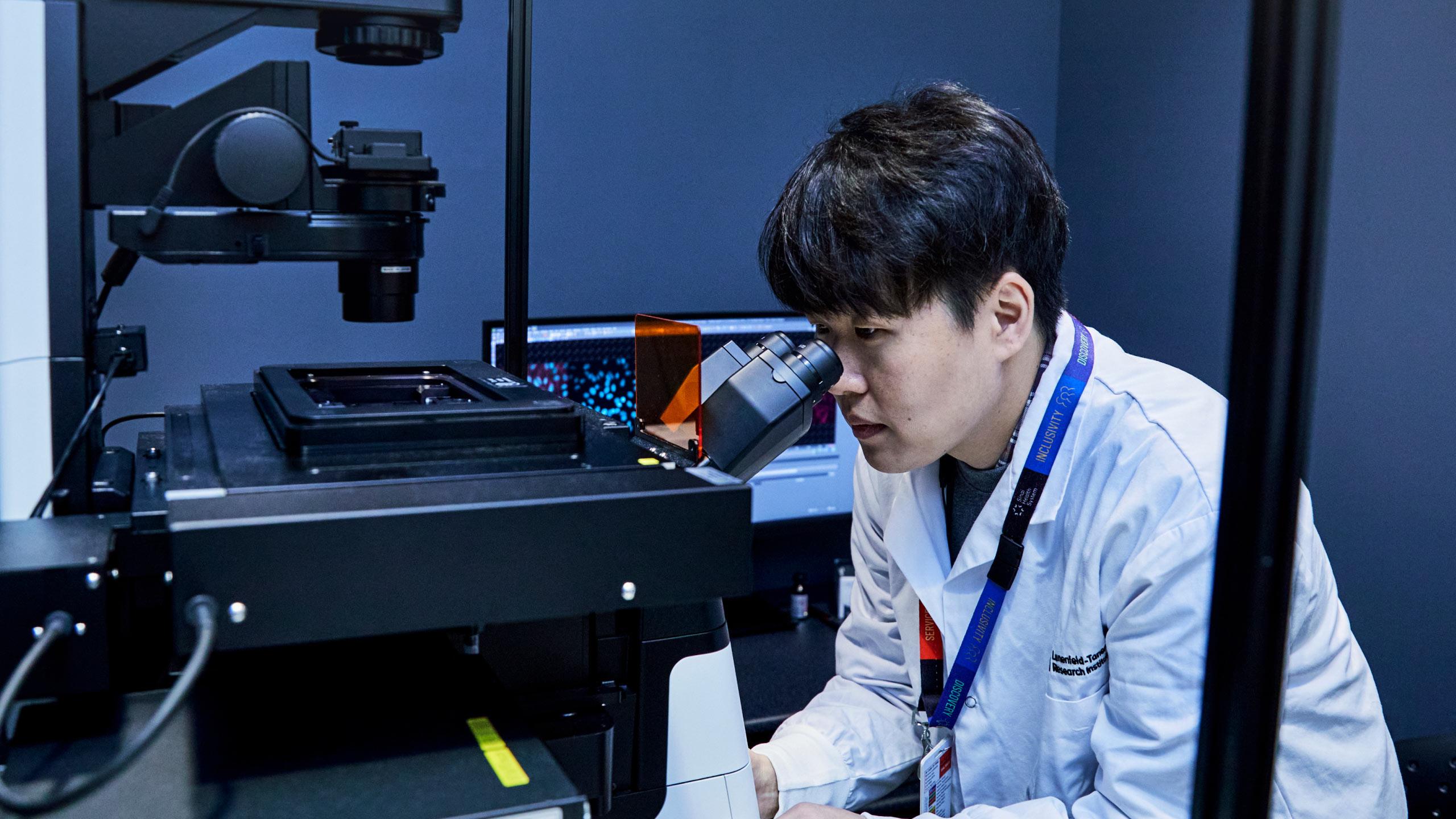Retinal Disorders
Learn more about retinal disorders and how they are treated.
Overview
There are many types of retinal disorders, and almost all of them affect vision.
The retina is a layer of nerves at the back of the eye. It turns light that enters the eye into electrical signals so the optic nerve can send images to the brain.
Two common retinal disorders are:
- Age-related macular degeneration
- Diabetic retinopathy
Retinal tears and detachment are emergencies that require urgent care from a specialist.
Types of retinal disorders
Age-related macular degeneration
The macula is a small area in the centre of the retina. When the cells in the macula break down, it affects the ability to see straight ahead. This can lead to difficulties with driving, reading, recognizing faces and looking at fine details.
Age-related macular degeneration is one of the most common causes of poor vision in people aged 60 and older. There are two types of age-related macular degeneration:
Dry macular degeneration is the most common type of age-related macular degeneration.
Vision loss happens slowly and usually in one eye at a time as the macula breaks down. Dry macular degeneration can become wet macular degeneration as it progresses.
Wet macular degeneration is the less common type of age-related macular degeneration.
It occurs when abnormal blood vessels grow beneath the macula. Vision loss happens more quickly and can be more severe.
For more information on age-related macular degeneration, visit the Canadian Ophthalmological Society.
Symptoms
Early macular degeneration may not cause any symptoms. As the disease progresses, symptoms can include:
- Blurred vision
- Distorted vision (for example, seeing straight lines as wavy)
- Difficulty recognizing familiar faces
- A dark or empty area in the centre of your vision
Diagnosis
An optometrist can detect age-related macular degeneration during a regular eye exam when your pupils are dilated. They look for yellow spots on the retina called drusen.
An optometrist will also check your eyesight to see how it has changed over time. They may show you a grid, called an Amsler grid, to assess your vision. You can learn more about the Amsler grid on our Ophthalmology Diagnostic Testing page.
Treatment
There is currently no treatment for dry macular degeneration. Your physician may recommend low-vision rehabilitation, which can help you adapt to changes in your vision.
Wet macular degeneration is sometimes treated with medication called anti-vascular endothelial growth factor (anti-VEGF) drugs. Anti-VEGF drugs are injected into the eye. They slow the growth of new blood vessels and can help preserve your vision.
Diabetic retinopathy
Over time, high blood sugar levels in people with diabetes can damage blood vessels in the retina. This is called diabetic retinopathy.
For more information on diabetic retinopathy, visit the Canadian Ophthalmological Society.
Symptoms
Symptoms of diabetic retinopathy can include:
- Blurred vision
- Floaters (small floating objects)
- Blindness
These symptoms may not appear until the disease has progressed.
Diagnosis
An optometrist can detect diabetic retinopathy during a regular eye exam when your pupils are dilated. If diabetic retinopathy is found, you will be referred to an ophthalmologist.
Tests such as optical coherence tomography (OCT) or a fluorescein angiogram may be recommended to diagnose and understand your condition.
Treatment
There is currently no treatment for early diabetic retinopathy.
As the condition worsens, an ophthalmologist may recommend anti-vascular endothelial growth factor (anti-VEGF) drugs. Anti-VEGF drugs are injected into the eye. They slow the growth of new blood vessels and can help preserve your vision.
Laser treatment or surgery is an option in some cases. Our Ophthalmology care team will provide you with more information if laser treatment or surgery is recommended as part of your care plan.
Retinal tears and detachment
Retinal tears occur when the jelly-like substance that fills most of the eye (the vitreous) shrinks and tugs on the retina, causing it to pull partially away from the back of the eye.
Retinal detachment occurs if fluid gets behind the retina and causes it to pull completely away from the back of the eye.
For more information on retinal tears and detachment, visit the American Academy of Ophthalmology.
Symptoms
Symptoms of retinal tears or detachment may include:
- Floaters (small floating objects) that appear suddenly in your vision
- Black spots in your vision
- Blurred or dimmer vision
- Flashes of light in your vision
- Loss of side vision (peripheral vision)
Diagnosis
If you have any symptoms of a retinal tear or detachment, see an optometrist or ophthalmologist as soon as possible. They will dilate your pupils and look at your retina using a special light. They may also recommend other tests to look at your retina, such as optical coherence tomography (OCT) or ultrasounds.
Treatment
If you have a retinal tear, laser surgery or cryotherapy (freeze treatment) may be recommended. These treatments prevent fluid from getting under the retina. If the retina becomes completely detached, you will need emergency surgery. Our Ophthalmology care team will provide you with more information if any of these treatments are recommended as part of your care plan.







